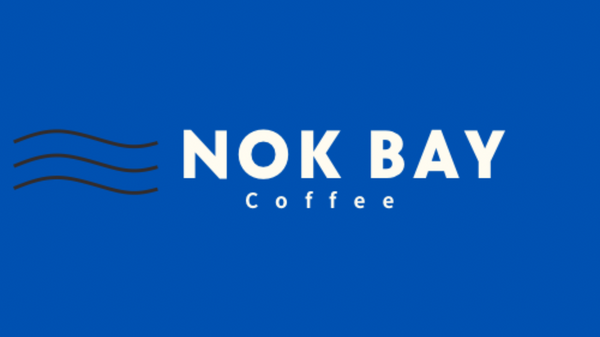
Jamaican Blue Mountain Coffee
Share
Know more about coffee: Jamaican coffee. Jamaican coffee, with Blue Mountain coffee as its core representative, has become one of the most prestigious high-end coffees in the world due to its unique natural conditions and strict quality control. The following is an introduction from multiple perspectives including history, production area, classification, flavor and market:
1. History and Industrial Development
1. Origin and early development Coffee cultivation in Jamaica began in the early 18th century. In 1728, Governor Sir Nicholas Laois introduced Arabica coffee trees from Martinique and initially planted them in the St. Andrew area. In the early 19th century, the coffee industry expanded rapidly, with production reaching 15,000 tons in 1814, but it gradually declined after the mid-19th century due to the abolition of slavery and soil management problems.
- Modern Revival: The Jamaica Coffee Industry Board (CIB) was established in 1950. Through strict quality control and Japanese financial assistance (after 1969), Blue Mountain Coffee regained its international reputation and gradually turned to the boutique route.
2. Japanese market dominates
In 1972, Jamaica signed a long-term agreement with Japan, under which 90% of Blue Mountain coffee was supplied to the Japanese market first. This monopoly was only gradually broken in recent years. Currently, Japan's share has dropped to 60%, while emerging markets such as China have increased their share.
2. Core production areas and terroir conditions
1. Blue Mountain wine region
According to Jamaica's Coffee Industry Regulatory Act, only coffee grown at an altitude of 915-1700 meters in the following four areas can be named "Blue Mountain Coffee":
- St. Andrew: The oldest wine region, represented by Wallenford Estate.
- Portland: Fertile volcanic soil and humid climate.
- St. Thomas and St. Mary: Smaller production but consistent quality.
2. Microclimate and planting characteristics - Volcanic soil: rich in minerals, giving the coffee beans a complex flavor.
- High altitude and foggy climate: large temperature difference between day and night delays the ripening period and increases sugar accumulation.
- Shade planting: Coffee trees are planted together with banana and avocado trees to avoid direct sunlight and conserve water and soil.
3. Grading and Quality Certification
1. Level classification
Blue Mountain coffee is divided into four categories according to bean size and defect rate (only for legal production areas):
- NO.1: 17-18 mesh, defect rate ≤ 2%, represents the highest quality.
- NO.2: 16 mesh, defect rate ≤2%.
- NO.3: 15 mesh, defect rate ≤ 2%.
- PB (round bean): 10 mesh, single berry, rare yield.
2. Non-Blue Mountain Grade
- High Mountain Coffee: Below 666 meters above sea level, the flavor is similar to Blue Mountain but slightly inferior.
- Jamaica Prime Coffee: Produced outside the Blue Mountains, of average quality.
3. Certification system Each batch of exported coffee must be certified by the Jamaica Agricultural Commodities Regulatory Authority (JACRA), packaged in wooden barrels (70 kg/barrel) and stamped with the official seal to ensure traceability.
4. Varieties and processing technology
1. Typica variety All Blue Mountain coffees are of the Typica variety, with copper-red leaves, weak disease resistance but elegant flavor, known for its citrus and jasmine aromas and creamy smooth taste.
2. Traditional washing process
- Fermentation and cleaning: After peeling the fruit, ferment for 12-18 hours and rinse with running water to remove pectin.
- Sun drying: Dry on cement floor or blanket until the moisture content is 12%-14% to retain the pure flavor.
- Innovative attempt: A small amount of sun-dried Blue Mountain coffee has been launched since 2020, but it has not been widely recognized by the government.
-5. Flavor and market positioning
1. Flavor characteristics
- Balance: A perfect blend of sour, sweet and bitter flavors, no noticeable bitterness, and a soft acidity like citrus.
- Complexity: Tropical fruits, dark chocolate, caramel and nuts on the finish, with great body and clean taste.
2. Scarcity and high prices
- Production restrictions: Annual production is only about 2,400 tons, and only 10% of the global share goes to markets outside Japan.
- Price benchmark: The price of NO.1 green beans can reach hundreds of dollars per kilogram, and the retail price is even higher.
3. Market chaos
- Counterfeit products are rampant: Most of the "Blue Mountain flavor" on the market is a blend of Colombian and Brazilian beans. You must look for JACRA certification and wooden barrel packaging.
VI. Cultural Significance and Future Challenges
1. The symbol of specialty coffee
Blue Mountain Coffee was once synonymous with "premium coffee". Although it has been surpassed by varieties such as Gesha in recent years, it still represents the ultimate pursuit of traditional boutique coffee.
2. Sustainable development issues
- Labor cost: Relies on manual picking, which is difficult to mechanize.
- Climate change: Frequent hurricanes threaten the stability of production areas.
Jamaican Blue Mountain Coffee is not only a masterpiece of natural terroir, but also a crystallization of history, craftsmanship and quality control. Its pure and balanced flavor and scarcity make it the "holy grail" in the hearts of coffee lovers. If you want to experience the authentic Blue Mountain, it is recommended to choose NO.1 grade products with JACRA certification, and be wary of low-priced imitations. Every cup of Blue Mountain coffee is a gift from the Caribbean sunshine and volcanic soil☕️.
